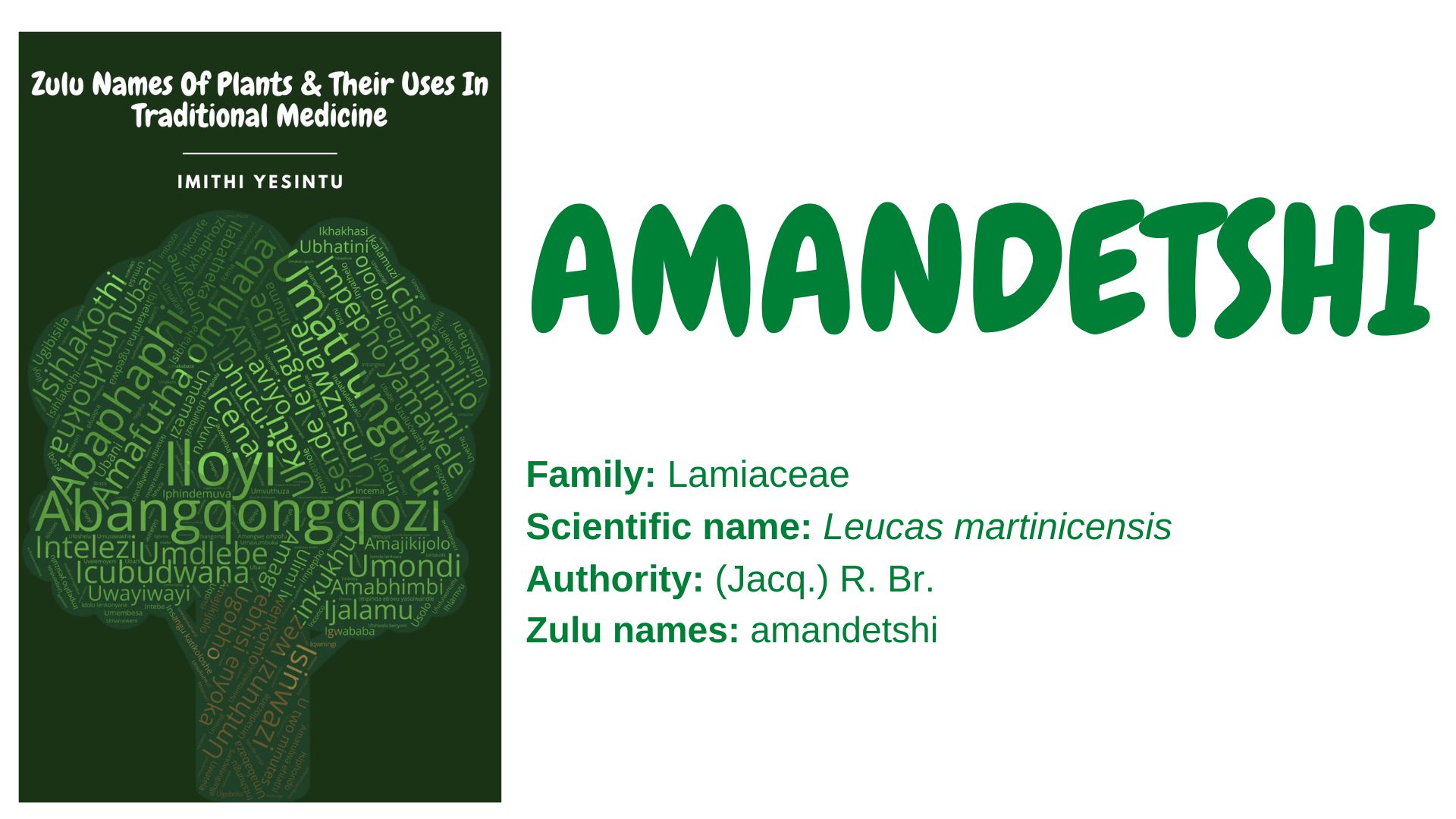Family: Lamiaceae
Scientific name: Leucas martinicensis
Authority: (Jacq.) R. Br.
Synonyms: Clinopodium martinicense Jacq., Leucas martinicensis (Jacq.) R.Br., Leucas martinicensis (Jacq.) R. Br.
Zulu name: amandetshi
Other names: bobbin weed, mosquito plant, tumbleweed, white wort (English) kruisement, tolbossie, waaibossie (Afrikaans)
Plant description: L. martinicensis is an aromatic annual herb that grows to about 1 m in height. It has oval-shaped opposite leaves with toothed margins, small white flowers, and dark brown nutlets. The plant has a mint-like aroma that is found in various parts of Asia and Africa.
In Northern Nigeria, the plant is known as the mosquito plant because it is used as a mosquito repellant.
Uses:
- The leaves are used to make an infusion to stimulate poor appetite.
- The leaves are used to treat feverish conditions in children.
- The leaves are used to make a decoction against roundworms in children.
- The plant is used to treat feverish conditions in children.
- The leaves are used to make an infusion that is taken to stimulate poor appetite.
- The plant is used to treat hypogalactia, a low supply of milk in lactating mothers.
- The leaves are used to make a decoction that is used to treat inflammation and rheumatism
- The plant is used to treat respiratory ailments, such as asthma and fever.
- The plant is used to relieve pain and treat painful menstruations.
- The plant is used to treat convulsions and epilepsy.
- The plant is taken to prevent diarrhoea.
- The leaves are used to treat snake bites.
- The leaves are crushed and applied topically to wounds, sores, and scabies.
- The plant is used as an insecticide, to repel mosquitoes.
- The flowers and leaves are used to make essential oils that are used to make lotions, creams, soap, shampoos, gargles, etc.
Safety precaution:
Using traditional medicine responsibly can enhance your overall health and well-being. Misuse and abuse can lead to complications. You can inquire about the correct use of traditional medicine from a knowledgeable herbalist and practitioner. You can also visit imithiyesintu.co.za or email: info@imithiyesintu.co.za to learn more about traditional medicine
References and further reading:
- Chouhan, H.S. and Singh, S.K., 2011. A review of plants of genus Leucas. Journal of Pharmacognosy and Phytotherapy, 3(3), pp.13-26.
- Das, S. N., Patro, V. J., and Dinda, S. C. (2012). A review: Ethnobotanical survey of genus Leucas. Pharmacognosy Reviews, 6(12), pp.100.
- Gelfand, M., Mavi, S., Drummond, R.B. and Ndemera, B., 1985. The Traditional Medical Practitioner in Zimbabwe. Mambo Press, Zimbabwe.
- Gerstner, J., 1941. A preliminary checklist Zulu names of plants with short notes. Bantu Studies.
- Regina, K.M.M., Adama, H., Jeanne, M. and Odile, N., 2015. Ethnobotany and Ethnopharmacognosy of Lamiaceae Species from Central Burkina Faso: Leucas martinicensis (Jacquin) R. Brown, Hoslundia opposita Vahl and Orthosiphon pallidus Royle Ex Benth. Am J Ethnomed, 2(4), pp.219-32.
- Tapera, M., Tarwireyi, F. and Matebesi, D., 2017. Preliminary phytochemical screening of Conyza albida and Leucas martinicensis herbs of Mashonaland province, Zimbabwe.
- Ugwah-Oguejiofor, C.J., Eze, U.A., Bello, S.O., Etuk, E.U., Ameh, G.I. and Ugwah, O.M., 2015. Anticonvulsant and sedative activities of aqueous leave extract of Leucas martinicensis (Jacq.) R. Br. Nigerian Journal of Basic and Applied Sciences, 23(2), pp.87-91.
You Can Order Your Copy Of The Book By Emailing: info@imithiyesintu.co.za
Feel Free To Add Other Uses Of This Plant In The Comment Section Below:
